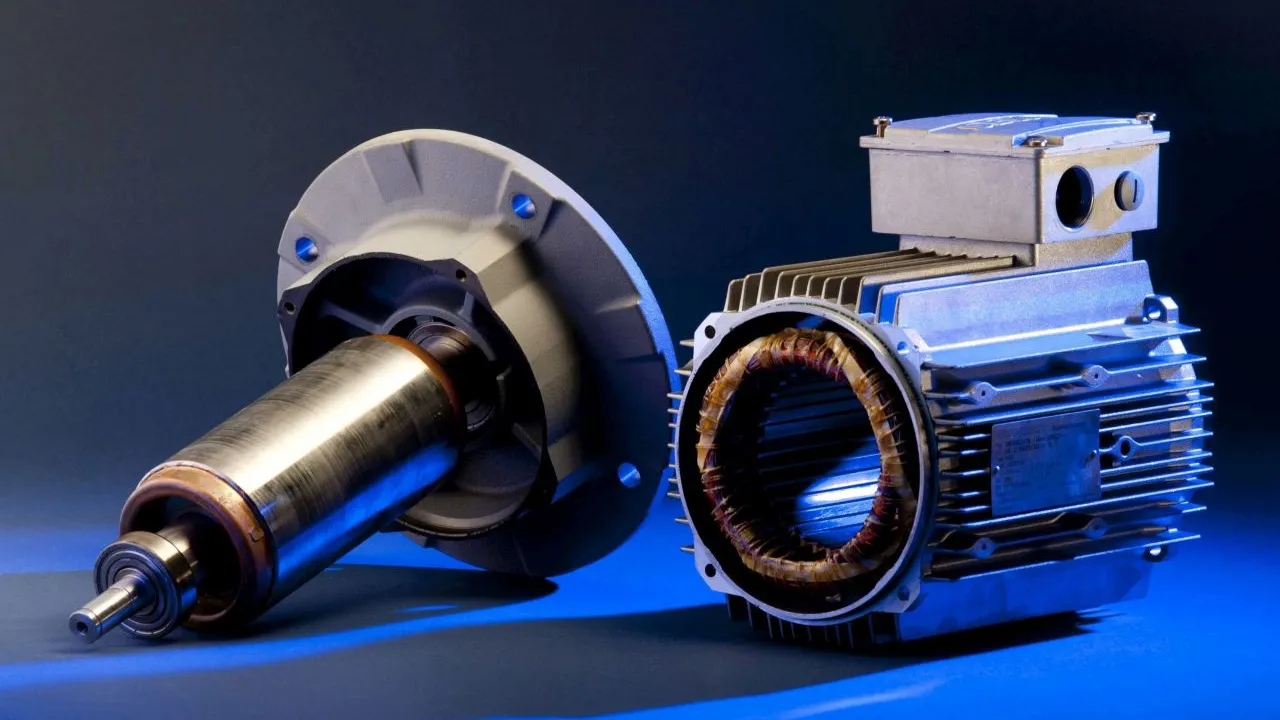Electric Motors For Cars — Guide To Automotive Terms

Electric vehicles (EVs) are rapidly changing the automotive landscape. At the heart of these clean-running machines lies the electric motor, the unsung hero responsible for converting electrical energy into the driving force that propels the car. Unlike internal combustion engines with many parts, electric motors are marvels of engineering, offering a simpler, more efficient way to power vehicles.
How Does An Electric Motor Work?
Electric motors for cars come in various configurations, but they all share a core principle: magnetism. The two main components are the stator and the rotor. The stator, the stationary part, houses electromagnets created by coils of wire. When an electric current passes through these coils, a rotating magnetic field is generated.
The rotor, the spinning part, typically consists of a permanent magnet or an electromagnet. The interaction between the rotating magnetic field of the stator and the rotor’s magnetism causes the rotor to spin, thus generating mechanical energy.
Advantages Of Electric Motors In Cars
Electric motors offer several advantages over traditional combustion engines:
- Efficiency: Electric motors convert a higher percentage of electrical energy into mechanical energy compared to gasoline engines, leading to greater range and reduced energy consumption.
- Performance: They deliver instant torque, providing a smooth and responsive driving experience with good acceleration.
- Quiet Operation: Electric motors run significantly quieter, contributing to a more peaceful driving experience and reduced noise pollution.
- Lower Maintenance: With fewer moving parts, electric motors require less maintenance than combustion engines.
- Water Resistance: Electric motors in EVs often utilise waterproof materials and seals around the housing and electrical connections to further enhance water resistance. Some motors are even rated with an IP (Ingress Protection) code, indicating their level of protection against water and dust intrusion.
Types Of Electric Motors For Cars
Permanent Magnet Synchronous Motor (PMSM)
A popular choice due to its high efficiency and power density. Permanent magnets in the rotor interact with the stator’s rotating magnetic field, delivering smooth and powerful torque.
Induction Motor (AC Motor)
A robust and cost-effective option. The rotor’s current is induced by the stator’s rotating magnetic field, creating a simpler design but with slightly lower efficiency compared to PMSMs.
Brushless DC Motor (BLDC Motor)
Offers precise control over speed and torque. Similar to PMSMs, they use permanent magnets in the rotor but are electronically controlled to achieve variable speeds.
How Do Electric Motors Transmit Power To The Wheels?
Electric motors in cars use two main methods to get power to the wheels:
Gearbox & Driveshaft (Traditional)
Similar to gas cars, the motor spins a shaft connected to a gearbox. This increases engine speed and torque for the wheels via a driveshaft and differential. (Pros: Simple, scalable. Cons: Less efficient, heavier)

In-Wheel Motors (Direct Drive)
Places electric motors directly in the wheels, eliminating the gearbox and driveshaft for potentially better efficiency and packaging flexibility. (Pros: More efficient, frees up space. Cons: Complex, new technology, expensive)
Different Configurations For Electric Motors In Cars
Electric cars offer flexibility in how they put the power down. Here’s a breakdown of the different configurations and placements for electric motors:
By Number of Motors
- Single Motor: Most common for budget-friendly EVs. Typically placed on the front axle (front-wheel drive) for efficiency, but rear placement (rear-wheel drive) is also possible.
- Dual Motor: Provides all-wheel drive (AWD) for better handling and performance. One motor on each axle (front and rear) or a single motor on the front axle paired with a smaller motor on the rear.
- Triple or Quad Motor: High-performance setups for ultimate acceleration and handling. Often seen with two rear motors for independent control and a single front motor.
Motor Placement
- Front-Wheel Drive (FWD): Most commonly, placing the motor near the front wheels for a familiar driving experience and packaging advantages.
- Rear-Wheel Drive (RWD): Offers a more sporty feel, with the motor mounted near the rear wheels.
- All-Wheel Drive (AWD): Achieved through various configurations, like dual motors (one on each axle) or a single front motor with additional motors on the rear wheels.
How Do Electric Cars Go In Reverse?
Electric cars don’t have a traditional “reverse gear” like gasoline cars. Here’s how it works:
- The electric motor is reversible. By changing the direction of the electrical current flowing through the motor’s coils, the magnetic field flips, causing the motor to spin in the opposite direction.
- This reversed rotation of the motor shaft translates to the wheels spinning in reverse, allowing the car to back up.
Types Of Cooling For Electric Motors In Cars
Electric motors in cars generate heat during operation, and keeping them cool is crucial for optimal performance and longevity. Here’s a breakdown of the main cooling types used for electric motors in cars:
Air Cooled Electric Motors:
- Simplest and most cost-effective method.
- Uses fins or channels on the motor housing to dissipate heat through airflow generated by the car’s movement or dedicated fans.
- Suitable for low-power motors or situations where weight is a major concern.
- Limitations: Less efficient at removing heat compared to liquid cooling, especially for high-performance applications.

Oil Cooled Electric Motors:
- Gaining traction in recent years, especially for high-performance EVs.
- Similar to liquid cooling, but uses oil as the coolant due to its higher heat capacity compared to water-glycol.
- This allows for more efficient heat absorption and transfer.
- Often used in conjunction with a water-glycol cooling system for the battery pack and inverter, creating a combined thermal management system.
- Oil leaks can be more problematic than coolant leaks, and the system might require additional maintenance.
Liquid Cooled Electric Motors:
- More effective at heat removal than air cooling, allowing for higher power output and better efficiency.
- A coolant, typically a water-glycol mixture, circulates through a jacket surrounding the motor, absorbing heat.
- This coolant then travels to a radiator, where airflow removes the heat from the liquid.
- It is the dominant method for high-performance EVs and those operating in hot climates.
- Adds complexity and weight to the car’s thermal management system.
Those are all the important terminologies involved in the electric motors for cars. Read other automotive term guides here. If you are new to the automotive terminologies guide, we recommend giving the beginner’s guide a read.
Find used cars for sale in the UAE and new cars for sale in the UAE.
Subscribe to DubiCars’ WhatsApp Channel for the latest automotive news, guides, polls, and informative infographics.
Stay tuned to UAE’s most popular auto blog for more information about car mechanicals.
Also Read:
- What Are Car Segments?
- What Are Different Types Of Infotainment?
- Everything You Need To Know About Car Interiors








